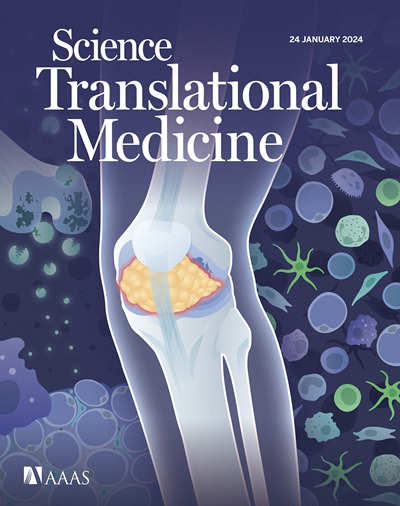CAR T cells based on fully human T cell receptor–mimetic antibodies exhibit potent antitumor activity in vivo
IF 15.8
1区 医学
Q1 CELL BIOLOGY
引用次数: 0
Abstract
Monoclonal antibody therapies have transformed the lives of patients across a diverse range of diseases. However, antibodies can usually only access extracellular proteins, including the extracellular portions of membrane proteins that are expressed on the cell surface. In contrast, T cell receptors (TCRs) survey the entire cellular proteome when processed and presented as peptides in association with human leukocyte antigen (pHLA complexes). Antibodies that mimic TCRs by recognizing pHLA complexes have the potential to extend the reach of antibodies to this larger pool of targets and provide increased binding affinity and specificity. A major challenge in developing TCR mimetic (TCRm) antibodies is the limited sequence differences between the target pHLA complex relative to the large global repertoire of pHLA complexes. Here, we provide a comprehensive strategy for generating fully human TCRm antibodies across multiple HLA alleles, beginning with pHLA target discovery and validation and culminating in the engineering of TCRm-based chimeric antigen receptor T cells with potent antitumor activity. By incorporating mass spectrometry, bioinformatic predictions, HLA-humanized mice, antibody screening, and cryo–electron microscopy, we have established a pipeline to identify additional pHLA complex–specific antibodies with therapeutic potential.

求助全文
约1分钟内获得全文
求助全文
来源期刊

Science Translational Medicine
CELL BIOLOGY-MEDICINE, RESEARCH & EXPERIMENTAL
CiteScore
26.70
自引率
1.20%
发文量
309
审稿时长
1.7 months
期刊介绍:
Science Translational Medicine is an online journal that focuses on publishing research at the intersection of science, engineering, and medicine. The goal of the journal is to promote human health by providing a platform for researchers from various disciplines to communicate their latest advancements in biomedical, translational, and clinical research.
The journal aims to address the slow translation of scientific knowledge into effective treatments and health measures. It publishes articles that fill the knowledge gaps between preclinical research and medical applications, with a focus on accelerating the translation of knowledge into new ways of preventing, diagnosing, and treating human diseases.
The scope of Science Translational Medicine includes various areas such as cardiovascular disease, immunology/vaccines, metabolism/diabetes/obesity, neuroscience/neurology/psychiatry, cancer, infectious diseases, policy, behavior, bioengineering, chemical genomics/drug discovery, imaging, applied physical sciences, medical nanotechnology, drug delivery, biomarkers, gene therapy/regenerative medicine, toxicology and pharmacokinetics, data mining, cell culture, animal and human studies, medical informatics, and other interdisciplinary approaches to medicine.
The target audience of the journal includes researchers and management in academia, government, and the biotechnology and pharmaceutical industries. It is also relevant to physician scientists, regulators, policy makers, investors, business developers, and funding agencies.
 求助内容:
求助内容: 应助结果提醒方式:
应助结果提醒方式:


